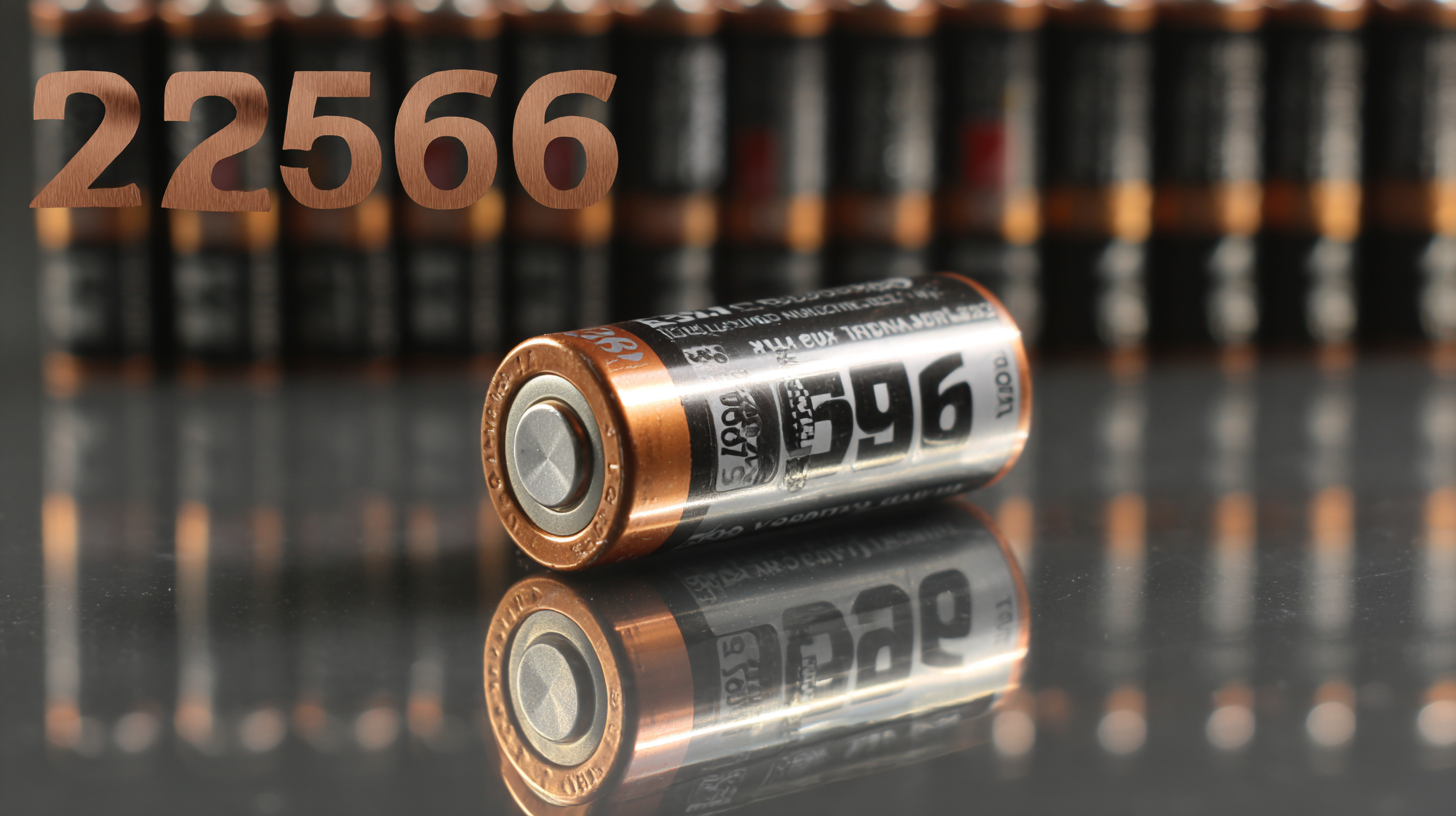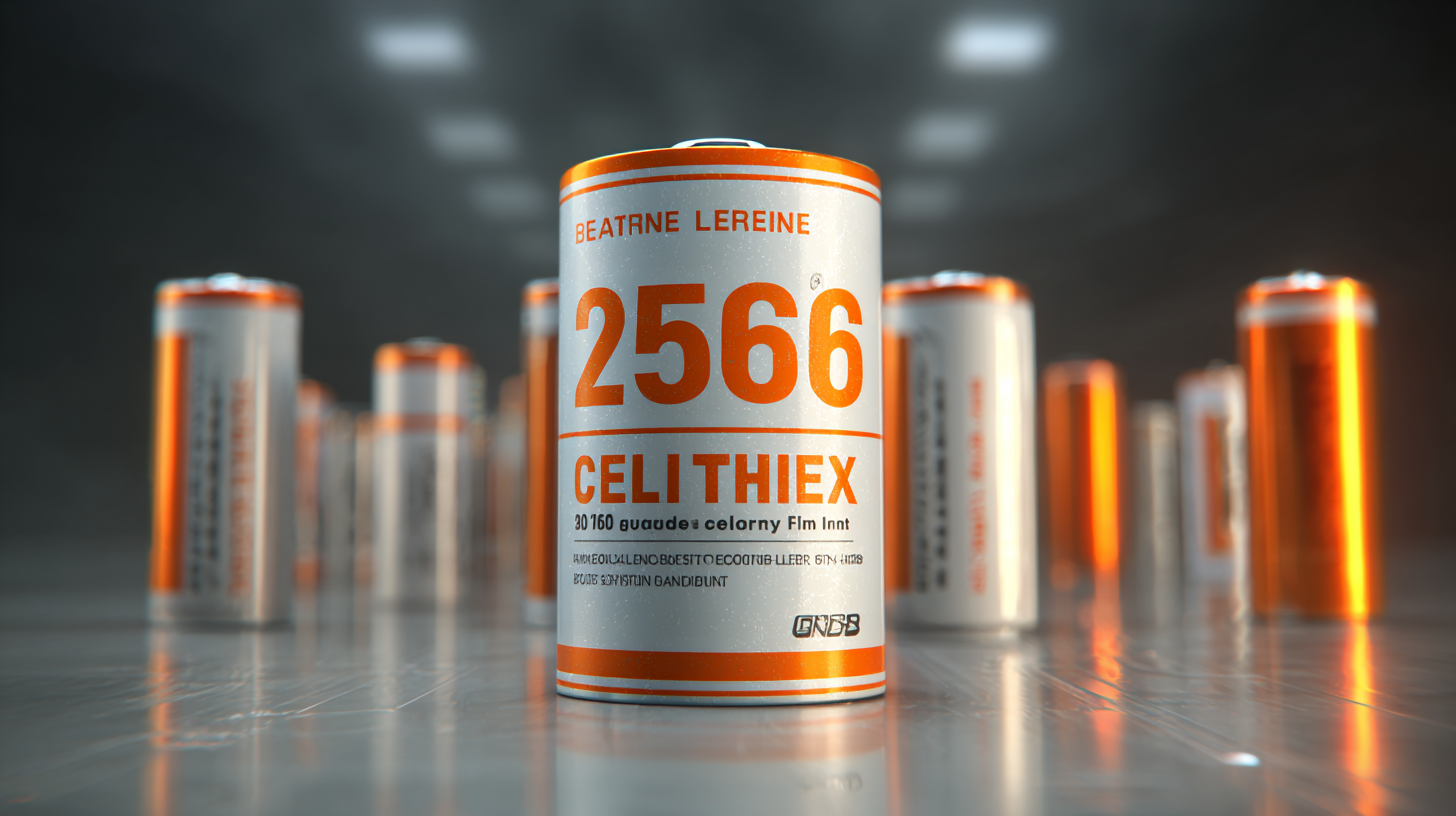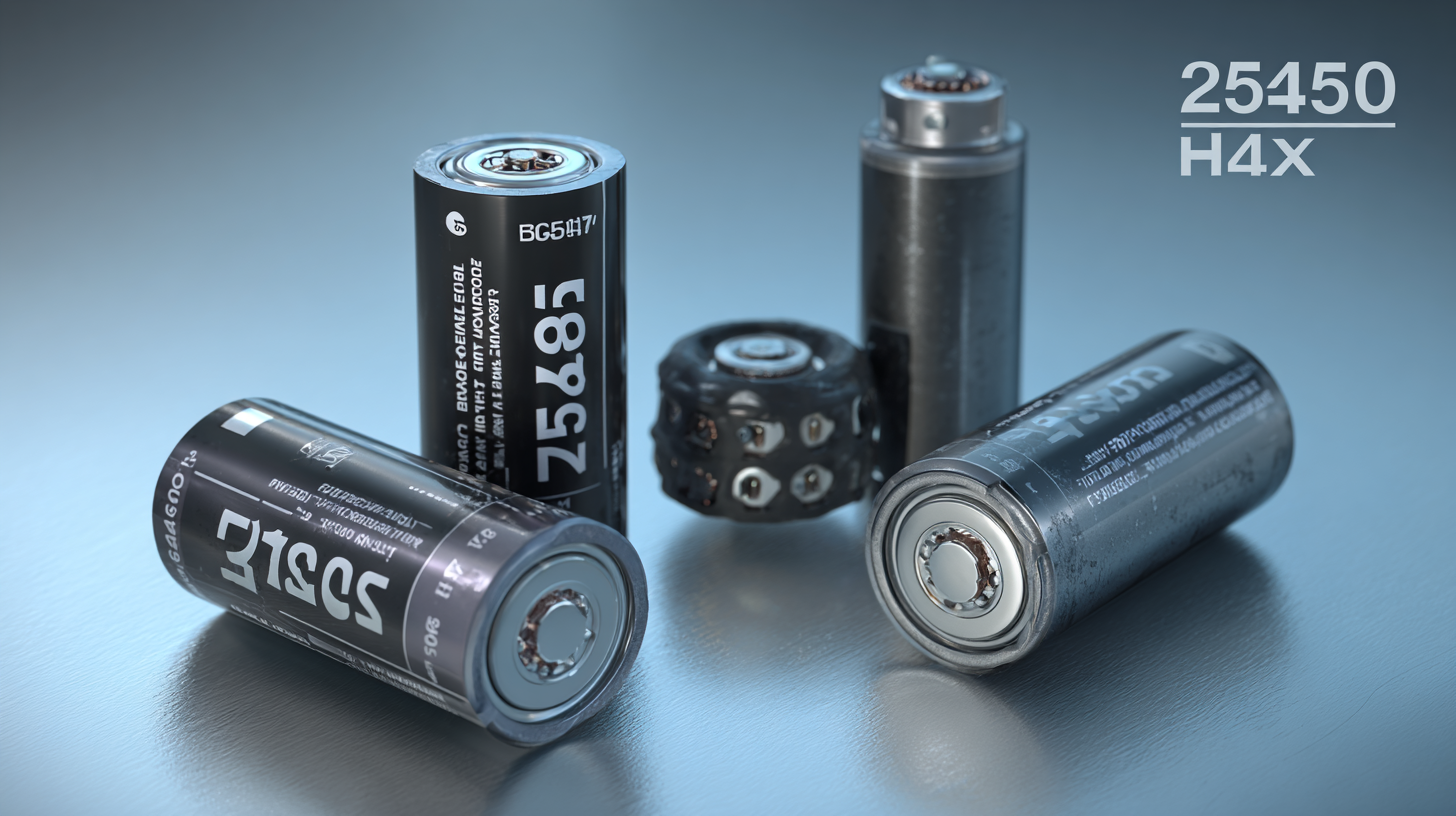Leave Your Message
The demand for high-performance energy storage solutions has skyrocketed in recent years, particularly with the increasing adoption of electric vehicles and renewable energy systems. Among various battery types, the 26650 cylindrical battery has emerged as a popular choice due to its superior capacity and reliability. According to a recent industry report by Grand View Research, the global lithium-ion battery market is projected to reach USD 129.3 billion by 2027, with cylindrical batteries accounting for a significant share due to their high energy density and efficiency. In this context, the "26650 Cylindrical Battery Pilot Line" stands out as an innovative approach to manufacturing these powerful batteries. This guide will explore 10 unique features of the best pilot lines specifically designed for 26650 cylindrical batteries, shedding light on advancements in technology and production efficiency that cater to the evolving needs of the energy sector.

26650 cylindrical batteries have gained popularity due to their robust design and high energy storage capacity. These batteries typically offer a larger cell size compared to other cylindrical options like the 18650, leading to enhanced performance in various applications. Understanding their basic structure, which includes a cylindrical shape, a lithium-ion chemistry, and a greater surface area, can help users appreciate why they are favored in power-hungry devices such as flashlights, e-bikes, and power tools.
When choosing a 26650 battery, one of the essential tips is to always check the discharge rate specified by the manufacturer. A higher discharge rate means the battery can deliver more power swiftly, making it suitable for high-drain devices. Additionally, consider the battery's cycle life and charge time, as these factors directly affect long-term performance and convenience.
Another important aspect is ensuring proper storage and handling of the batteries to maximize their lifespan. Store batteries in a cool, dry place and avoid exposing them to extreme temperatures. Always use a compatible charger, as using the wrong type can lead to inefficiency or damage. By following these practices, users can enhance their experience with 26650 batteries and enjoy their benefits in various applications.
| Feature | Description | Benefit |
|---|---|---|
| High Energy Density | Offers a high capacity in a compact size, typically around 5000mAh. | Provides longer usage time before recharging. |
| Stable Discharge Rate | Maintains steady voltage throughout the discharge cycle. | Ensures consistent performance of devices. |
| Wide Temperature Range | Operates efficiently in extreme conditions, from -20°C to 60°C. | Suitable for various environments and applications. |
| Long Cycle Life | Can handle over 1000 charge/discharge cycles without significant capacity loss. | Cost-effective in the long run due to durability. |
| Effective Safety Features | Integrated protection circuits to prevent overcharging, short-circuiting, and overheating. | Enhanced user safety and reduced risk of battery failure. |
| Low Self-discharge Rate | Retains charge for a long duration when not in use, typically under 3% per month. | Ideal for emergency and backup applications. |
| Eco-friendly Materials | Manufactured using materials that reduce environmental impact. | Supports sustainability initiatives. |
| Versatile Applications | Suitable for various devices including flashlights, robotics, and power tools. | Flexible use across multiple industries. |
| High Discharge Rates | Can deliver high currents ideal for power-intensive devices. | Enhances performance in devices that require quick bursts of energy. |
| Compatibility with Various Chargers | Works with standard lithium-ion battery chargers. | Ease of charging and widespread availability of compatible chargers. |
In the rapidly evolving landscape of battery technology, the 26650 cylindrical battery stands out due to its unique specifications and performance capabilities. A pivotal feature to consider when evaluating the best pilot lines for these batteries is their energy density, which typically ranges from 150 to 250 Wh/kg. This impressive density allows for longer-lasting power in various applications, thereby enhancing usability across multiple sectors, from electric vehicles to portable electronics.
Another critical specification is the discharge rate, which significantly impacts a battery's performance under load. The best 26650 batteries can deliver discharge rates of up to 30A, making them suitable for high-drain devices. According to recent industry reports, these batteries also exhibit superior cycle life, with many models offering over 2,000 charge cycles. This longevity ensures that users receive the best value for their investment while minimizing environmental impacts associated with battery disposal.
Thus, when selecting pilot lines for 26650 batteries, concentration on these key specifications is essential for achieving optimal performance and reliability.
The manufacturing of 26650 cylindrical batteries has seen remarkable advancements, driven by innovative techniques that enhance performance and durability. One prominent method is the implementation of laser welding technology, which ensures precision in connecting battery cells while minimizing heat generation. This technique not only strengthens the integrity of the connections but also contributes to improved overall efficiency, allowing the batteries to handle higher discharge rates without compromising safety.
Another cutting-edge approach is the use of advanced materials for the electrodes and electrolytes, which significantly increases energy density. These materials are engineered at the molecular level to provide better conductivity, resulting in batteries that not only charge faster but also last longer. Coupled with automated manufacturing processes, these innovative techniques streamline production while maintaining high-quality standards, paving the way for the next generation of high-performance 26650 cylindrical batteries.
When considering the safety features of the 26650 cylindrical battery production, it is paramount to address thermal management systems. The effective management of heat within battery cells is critical to preventing thermal runaway, a phenomenon that poses significant risks in battery operation. Recent reviews highlight the advancements in Battery Thermal Management Systems (BTMS), which are designed to optimize temperature control, ensuring enhanced safety and operational efficiency. A multi-scale thermal analysis indicates that advanced materials and systems can significantly mitigate explosion hazards, which is particularly important as the demand for powerful energy sources continues to escalate, especially in electric vehicles.

Moreover, as the market for cylindrical lithium iron phosphate (LiFePO4) batteries is projected to reach approximately $10.5 billion by 2035, with a compound annual growth rate (CAGR) of 10.92%, manufacturers must prioritize safety features in their production lines. The critical characteristics of cylindrical lithium-ion batteries, including their design and chemical composition, play a significant role in determining their thermal stability and vulnerability to thermal runaway. As safety regulations tighten, ensuring robust safety features during the production of 26650 cylindrical batteries will not only protect consumers but also bolster the industry's reputation during this rapid period of growth.
In an age where sustainability is paramount, the 26650 cylindrical battery industry is making strides towards reducing its environmental impact. According to a recent report from the International Energy Agency, lithium-ion batteries, like the 26650, are expected to dominate the battery market, reaching a staggering 1,500 GWh in annual production by 2030. As a result, manufacturers are increasingly focusing on making their production lines eco-friendlier by implementing advanced recycling technologies and using sustainable materials.
To minimize environmental harm, battery manufacturers are adopting closed-loop recycling systems. This not only reduces waste but also recycles valuable materials, thereby lowering the carbon footprint significantly. Additionally, companies are striving to source lithium and cobalt from responsible suppliers, reflecting a commitment to ethical mining practices that protect the environment and local communities.

